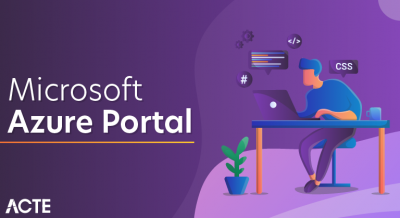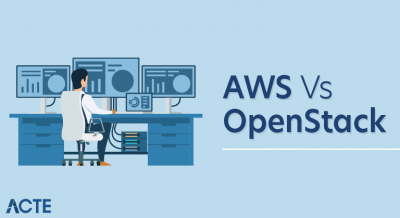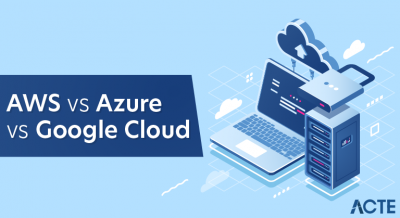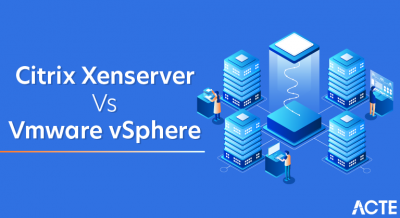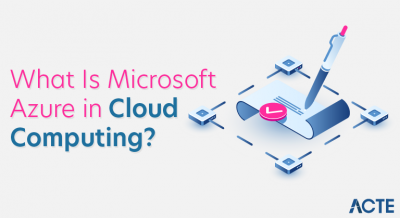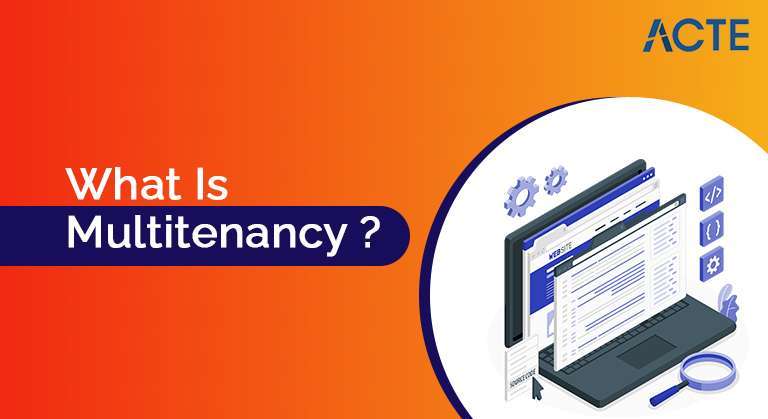
- Introduction
- What Is Multi Tenancy
- Multi Tenancy comes in three degrees
- From time sharing to SaaS
- Multi Tenancy versus distributed computing
- How does multi-occupancy work?
- Out in the open distributed computing
- In holder Engineering
- In Serverless Registering
- In private distributed computing
- Multi Tenant conditions in Linux
- Single-Tenant versus Multi-Tenant
- Advantages of Multi Tenancy Architecture
- Key Risks of Multi Tenancy
- Multi Tenancy Applications
- Conclusion
Introduction :
Multi-tenure, as it identifies with registering, is a product compositional guideline generally normal to business figuring. A specialist co-op stores programming applications on a focal server or servers for use by different associations. Every association utilizes the application as though introduced on their local PC organization. While these associations share utilization, each is free with no admittance to the others’ information, settings, or client data. The idea of multi-occupancy works similarly as different clients on a solitary PC, however on a much bigger scope.
- Multitenancy permits different occurrences of the given application to work in a common climate. Subsequently, a solitary occurrence of programming runs on a server and obliges various occupants. Occupants incorporate actually, yet they’re isolated intelligently. With this arrangement, a product application living in a multi-inhabitant design will share committed cases of setups, information, and client the board, among different properties.
- Inhabitants have some proportion of customization for the common asset, such as controlling which clients can get to the assets or how the application looks and feels. They can’t, notwithstanding, tweak the code.
- Here is an ordinary model. Think about your neighborhood bank. Numerous clients store their money in the bank, yet each has their private record, where their resources can’t be moved by different customers, despite the fact that everybody’s keeping their assets in a similar bank. Individual bank clients don’t speak with one another, can’t get to one another’s assets, and aren’t even mindful of one another’s presence — one bank, numerous clients.
- That is the public cloud model — one framework, numerous servers, with every server having select use and admittance to their particular information and other cloud-based assets.
What Is Multi Tenancy?
Multitenancy is a type of cloud design where different customers of a solitary cloud seller share similar registering assets. Every customer is known as an occupant. This type of sharing applies to sharing programming assets just as shared facilitating on servers.
Multi Tenancy comes in three degrees :
Low : IaaS and PaaS are multi-occupant; SaaS is single-inhabitant.
Center : IaaS and PaaS are multi-occupant; little SaaS groups are multi-inhabitant.
High : IaaS, PaaS, and SaaS are completely multi-occupant.
- That thought never truly disappeared, and today the idea of multi-occupancy is the thing that makes distributed computing conceivable. A public cloud takes a pool of shared assets—handling power and memory—and splits it between different inhabitants. Each occupant’s information and jobs stay segregated, regardless of whether they end up running on similar actual machine or gathering of machines.
- Assuming we take a similar thought a stride further and apply it to programming engineering, we show up at the advanced idea of SaaS. A SaaS supplier runs a solitary case of an application and offers admittance to individual clients. Every client’s information stays disengaged, despite the fact that they’re getting to a similar programming as each and every other client.
- When alluding to a compartment coordination stage, for example, Kubernetes, the term multi tenure as a rule implies a solitary group that serves various ventures. The group is arranged so each task runs disengaged from the others.
From time sharing to SaaS :
The possibility of multi tenure has been around for quite a long time. During the 1960s, colleges with amazing, costly centralized servers created timesharing programming that permitted numerous clients to get to the PC at basically a similar time.
- Cloud specialist co-ops supply clients with the stage and hidden IT foundation that is required for distributed computing from a pool of assets that are then assigned to various clients (or occupants).
- Cloud engineering is the way every one of the parts and capacities important to assemble a cloud are associated to convey an internet based stage on which applications can run.
- Architecting a cloud stage requires extra degrees of advancement to fuse containerization, arrangement, application programming interfaces (APIs), directing, security, the board, and robotization programming.
- Public cloud engineering: A cloud climate made from assets not claimed by the end client that can be rearranged to different occupants.
- Private cloud design: Loosely characterized as a cloud climate exclusively devoted to the end client, ordinarily inside the client’s firewall and some of the time on premise.
Multi Tenancy versus distributed computing :
As displayed beforehand, multitenancy as an idea is a significant component of distributed computing since it is a solitary example of a product application that is given to numerous inhabitants. Mists are viewed as Platforms-as-a-Service (PaaS), rather than multi-occupancy, which is regularly connected with SaaS applications.
How does multi-occupancy work?
Here we will take a more top to bottom gander at the specialized rules that make multi-occupancy conceivable in various types of distributed computing.
- This is like the manner in which numerous public cloud suppliers carry out multi-tenure. Most cloud suppliers characterize multi occupancy as a common programming case. They store metadata* about each inhabitant and utilize this information to modify the product occasion at runtime to meet each occupant’s requirements. The inhabitants are disengaged from one another by means of consents. Despite the fact that they all offer a similar programming occurrence, they each utilise and experience the product in an unexpected way.
Out in the open distributed computing :
Envision a unique motor that could be shared effectively between numerous vehicles and vehicle proprietors. Every vehicle proprietor needs the motor to act somewhat in an unexpected way: some vehicle proprietors require an incredible 8-chamber motor, while others require a more eco-friendly 4-chamber motor. Presently envision that this unique motor can transform itself each time it fires up so it can all the more likely address the vehicle proprietor’s issues.
- Holders are apportioned from one another into various client space conditions, and every compartment runs as though it were the main framework on that host machine. Since holders are independent, various compartments made by various cloud clients can run on a solitary host machine.
In holder Engineering :
Holders are independent heaps of programming that incorporate an application, framework libraries, framework settings, and all the other things the application needs to run. Holders assist with guaranteeing that an application runs a similar regardless of where it is facilitated.
- As the name implies, serverless capacities don’t run on devoted servers, but instead on any accessible machine in the serverless supplier’s foundation. Since organizations are not appointed their own discrete actual servers, serverless suppliers will regularly be running code from a few of their clients on a solitary server at some random time – one more illustration of multi-tenure.
- Some serverless stages use Node.js for executing serverless code. The Cloudflare serverless stage, Cloudflare Workers, utilizes Chrome V8, in which each capacity runs in its own sandbox, or separate climate. This keeps serverless capacities absolutely separate from one another in any event, when they’re running on a similar framework.
In Serverless Registering :
Serverless registering is a model where applications are separated into more modest pieces called capacities, and each capacity just suddenly spikes in demand for request, independently from different capacities. (This model of distributed computing is otherwise called Function-as-a-Service, or FaaS.)
In private distributed computing :
Private distributed computing utilizes multi-tenant engineering similarly that public distributed computing does. The thing that matters is that different inhabitants are not from outside associations. Out in the open distributed computing, Company An offers foundation with Company B. In private distributed computing, various groups inside Company An offer foundation with one another.
- With VMs, a hypervisor turns up visitor machines that each have their own working framework just as applications and conditions. The hypervisor additionally ensures clients are disconnected from one another.
- Contrasted with VMs, compartments offer a more lightweight, adaptable, and more straightforward to-scale model. Holders rearrange multi-tenure organizations by sending various applications on a solitary host, utilizing the portion and the compartment runtime to turn up every compartment. As opposed to VMs, which each incorporate its own portion, applications running in compartments share a part, even across various inhabitants.
- In Linux®, namespaces make it workable for quite some time to utilize a similar asset simultaneously without making a contention. Getting a holder is as old as any running cycle.
- When utilizing Kubernetes for holder coordination, it’s feasible to set up multi-inhabitant conditions utilizing a solitary Kubernetes group. It’s feasible to isolate occupants into their own namespaces, and make approaches that uphold inhabitant confinement.
Multi Tenant conditions in Linux :
Anybody setting up a multitenant climate will confront the decision of detaching the conditions utilizing virtual machines (VMs) or holders.
- The single inhabitant model accompanies its own benefits. A solitary occupancy offers a safer climate first off, since each inhabitant’s assets are altogether isolated from other occupants assets and data. Also, the client has full customization and usefulness control. At last, single occupant clients appreciate more prominent dependability since assets are consistently accessible and plentiful.
- Notwithstanding, there are disadvantages to a solitary tenure. No asset sharing likewise implies no expense sharing, so a solitary tenure is regularly more costly. Additionally, single occupants have nobody to impart ordinary support and arrangement obligations to, so there’s more work included.
- Thus, single occupancy offers more prominent protection and asset accessibility than multitenancy. Be that as it may, the last option depletes less of the client’s time, assets, and cash.
Single-Tenant versus Multi-Tenant :
Single inhabitant engineering is, obviously, something contrary to multi-occupant design. The name “single inhabitant” is obvious with respect to its tendency. Single occupancy implies the product and supporting foundation serves a solitary client. Every client has their different, autonomous information base or programming occurrence, and nobody shares.
- It’s financially savvy. Much similarly that imparting a ride to others is less expensive for you, it’s more affordable sharing cloud assets. Clients wind up paying just for what they need, that’s it. Work and staff, on-boarding new inhabitants, support and advancement, and updates — these get taken care of by the cloud, with just a small portion of the expenses passed on and divided between the occupants.
- It’s effectively adaptable. Working off of the benefit of cost-viability, this benefit implies clients can add or eliminate assets on a case by case basis. This adaptability is ideally suited for associations that are developing quickly however eccentrically.
- It’s solid and offers more security. While the facts really confirm that a solitary tenure is safer, multitenancy is by the by still great at danger location and keeping occupants’ assets separate from one another.
- It’s a superior utilization of assets. On the host’s side, multitenancy utilizes framework. It checks out to open server admittance to numerous clients as opposed to restricting it to a solitary customer.
- It’s without upkeep for the client. Don’t clients need to pay checking and organization costs, yet they additionally don’t need to invest the energy, all things considered. The host handles assignments like updates and overhauls, support, and other related undertakings. Think about the model like leasing a condo — the landowner handles fixes, the occupant handles paying the lease.
Advantages of Multi Tenancy Architecture :
We momentarily addressed some multitenancy benefits, yet how about we dive into more detail.
- It’s a security hazard. Assuming you decide to utilize a multi tenure model, there’s a possibility, but slight, that your information may become presented to outsiders. This break could happen either unintentionally, as by a framework breakdown or programming bug that uncovered the information, or purposely, the kindness of a programmer taking advantage of a shortcoming in the design. This danger increments or diminishes comparative with the degree of safety efforts the host gives.
- There are conceivable reaction time issues. Condo inhabitants face the danger of boisterous neighbors demolishing their tranquility and calm. In a cloud facilitating climate, clients burning-through over the top CPU cycles are the uproarious virtual neighbor. This CPU channel dials back handling time for everybody.
- The host gives orders with respect to personal time. Very much like apartment complexes have no say when the director chooses to repaint the structure or work on the pipes, cloud customers don’t direct booked vacation.
- It’s more intricate. All things considered, multitenancy is more convoluted than a solitary tenure.
- Applications might be less adaptable. Shared applications will generally be less adaptable than applications given in other occupant models.
- So do the benefits offset the disadvantages? That boils down to the singular client and their degree of hazard resistance.
Key Risks of Multi Tenancy :
Obviously, no cloud facilitating model is awesome or without chances. Here are a few disadvantages to multi-occupancy.
- Carbonite
- Docker
- Freshbooks
- HubSpot
- Kubernetes
- Microsoft Office 365
- Netflix
- Salesforce
- WordPress
- Zendesk
- Zoho.
Significance of Multi Tenancy :
Multitenancy is a significant idea since it assists us with acquiring the greatest advantage from the public cloud climate. The cloud climate, thus, has everybody’s information, clients, providers, accomplices, and overall assets. Along these lines, multitenancy offers quality and predictable cloud admittance to everybody at a reasonable cost. It’s an extraordinary method for evening the odds with the goal that a private company can more readily go up against a solid super partnership.
At the point when the cloud presents new functionalities, highlights, and developments, a bigger crowd benefits from those upgrades. Much of the time, it’s the requirements of only a couple of clients on a multi-inhabitant site that prod on the advancement of new highlights. All things considered, in the end, everybody in the design winds up the better for it. Single tenure models don’t work thusly, as any enhancements serve just a single customer.
Multi Tenancy Applications :
Multitenancy applications serve numerous clients or customers with one application presentation. Each client’s information is isolated from the others. Keep in mind, clients are classified “occupants.
These are the attributes of multi-tenure applications.
View : Tenants can portray their application interpretations, like UIs (UI).
Clients and gatherings : Tenants can change and tweak their own standards to work with information access control.
Informational index creation : Tenants can describe a picked data set blueprint for the application. This blueprint incorporates renaming data set fields, eliminating/adding information base tables, and then some.
Business rules : Tenants can outline their own business rules and application reasoning.
Most cloud-based applications are multi-occupant. Here are some famous multi occupancy application models :
Conclusion :
The Multitenancy test is trying for most experts since it covers an immense range of points adjusting to the prospectus dependent on PMBOK. Thus, the decision of a decent preparation foundation is basic. Finishing the Multitenancy test is intense; along these lines, it will be better on the off chance that a competitor peruses a couple of books on the subject. You can likewise select for our Online Multitenancy Certification Training Course which covers the most recent prescribed procedures featured in the PMBOK Guide – sixth Edition, and gain from master professionals and finish the Multitenancy test on your first endeavor.

